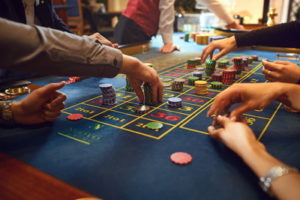 When it comes to the online gambling industry, one of the most attractive elements, mainly for those who are new to it is that they are able to play most of the games for free. What this does is allow them to get a feel for the game and how to play it without staking anything until they feel comfortable with the rules.
When it comes to the online gambling industry, one of the most attractive elements, mainly for those who are new to it is that they are able to play most of the games for free. What this does is allow them to get a feel for the game and how to play it without staking anything until they feel comfortable with the rules.
However, every player, regardless of the ability or skill level will have different playing styles and one of these elements relates to the amount of money that they are comfortable staking, based on their level of risk, though also the type of game that they are playing. Although playing for free can be fun, it will not by any means at all make any difference to your bankroll. Let’s explore this in a bit more detail and look at the various games and styles that people use in their gambling behaviour and ultimately ask is there a difference between how low stakes and high stakes customers play.
The Difference Between High Rollers And Low Rollers
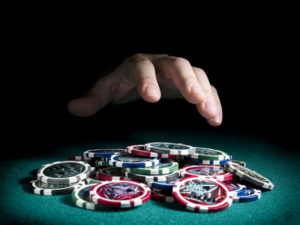 Those who have a leaning towards playing high stakes games or those who gamble larger amounts of money are referred to as ‘high rollers’, which is a term that has been coined in the industry for some time. What you will find is often the case is that all major casinos will offer each casino game (blackjack, roulette, poker etc) in different classifications; low stakes and high stakes. In a low stakes game, the minimum bet will be of a lower value compared to being of a higher value in a high stakes game.
Those who have a leaning towards playing high stakes games or those who gamble larger amounts of money are referred to as ‘high rollers’, which is a term that has been coined in the industry for some time. What you will find is often the case is that all major casinos will offer each casino game (blackjack, roulette, poker etc) in different classifications; low stakes and high stakes. In a low stakes game, the minimum bet will be of a lower value compared to being of a higher value in a high stakes game.
Some of the time, you can tell the difference between the two, especially in land-based casinos, however not always because it is easy to get drawn into the stereotypical assumption that a high roller will arrive in a limousine, dressed in a tuxedo when they might just be enjoying a special night out. Especially in resorts like Las Vegas, which is predominantly full of tourists making the most of the ‘must do’ things.
How Are Payouts Affected By Stake?
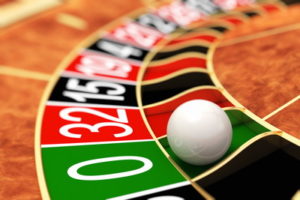 It goes without saying that if you are playing a high stakes game of blackjack for example, that you will need a considerably large bankroll, especially if it is for 100 coins every hand with a minimum payout of 200 coins.
It goes without saying that if you are playing a high stakes game of blackjack for example, that you will need a considerably large bankroll, especially if it is for 100 coins every hand with a minimum payout of 200 coins.
This can really eat into your budget, which means that you really need to know what you are doing and also understand how the game(s) work, particularly from a house edge perspective. Below we’ve included examples of each casino game and the intricacies that are involved, especially from a more technical angle.
Blackjack
 One of the most important things to consider when it comes to blackjack (as briefly referred to) is the house edge, which when it comes to payout and the stakes involved can be a big factor.
One of the most important things to consider when it comes to blackjack (as briefly referred to) is the house edge, which when it comes to payout and the stakes involved can be a big factor.
What many players do not realise (or those pretending to be high rollers in land based casinos for example), is that in blackjack, the house edge slightly favours the dealer (0.39 percent for European Blackjack – each variant differs slightly) due to the fact that they play their hand last, which means that they have seen how the game has unfolded.
For high rollers, this can be particularly nervy (though some may enjoy the adrenaline rush if their hand hasn’t already gone bust), due to the fact that they can lose a considerable amount in the space of minutes. Should they win though, the rewards are potentially huge and as a result (as many gamblers do) might realise that ‘luck’, or the pattern of play is on their side, raise their stake for the next hand because of this.
Those who gamble low stakes, despite the game’s disadvantage obviously have less to lose and because they are playing at such a level, they might be playing the long game and have a strategy in place, rather than using a style that some might consider reckless.
Interestingly, a study by Towards Data Science, which analysed 1,000 rounds of blackjack hands with three participants, including the dealer and using six decks of cards yielded some intriguing results.
It was found that after 1,000 rounds that the average loss was $8.34 when every bet was $1 (low stakes) and as a result the house edge using this strategy for the investigation was determined to be at 0.834 percent. This data was also based on a round of blackjack lasting one minute on average, while the player over a three hour period would lose an average of $1.15 while wagering $1 per round. It was also found that the cumulative 5 percent quantile for loss was worked out to be $26.50.
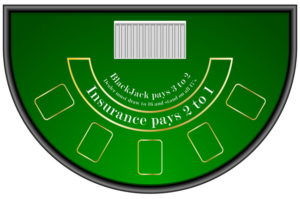 What could be ultimately ascertained from this study was that if you go to the casino with 26 times your wagering amount, it meant that you would have less than five percent chance of going bust at the end of a three hour session playing blackjack.
What could be ultimately ascertained from this study was that if you go to the casino with 26 times your wagering amount, it meant that you would have less than five percent chance of going bust at the end of a three hour session playing blackjack.
A quantile refers to a data sample from the study in this case, being divided into equal sized subsets so that you can work out the overall probability distribution, to then divide this into equal probability for the different subsets of the sample. Using this investigation, that figure was worked out to be 5 percent based on the workings out of the total numbers from the study.
Ultimately, there are a number of variables to take into account here when you relate it to the aforementioned investigation. Firstly, Blackjack at the end of the day, is gambling and anything can happen. How events occur in one game might be completely different to another and secondly, the figures could differ if the number of rounds were lower or higher. In addition, the number of decks of cards used may also likely have some sway and also how they are shuffled.
While this is just one, albeit quite informative study which zeros in on exact variables, this number may differ if it was done again and also if you tweaked the variables slightly (more/less decks of cards), which means the figures and also the resulting quantile might be different.
Furthermore, it also means that you are not at all guaranteed of only having a 5 percent chance of going bust if you go into a casino to play blackjack with 26 times your wagering amount per round; it is merely an illustration from this study based on the results that it yielded. However, based on how blackjack works and taking into account the house edge, the player (if they understand the game, how it works and apply cautious strategy) still has a good chance of working the numbers in their favour. It is afterall, regarded as one of the easier casino games to win at.
Roulette
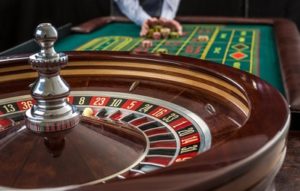 A game that typically divides opinion among gamblers in terms of what kind of strategy that you use when it comes to the bets that they make, this also applies just as much to the size of the stakes that are made.
A game that typically divides opinion among gamblers in terms of what kind of strategy that you use when it comes to the bets that they make, this also applies just as much to the size of the stakes that are made.
Roulette typically is a game that those with a high-risk attitude like, whether or not they are high rollers, because of the fact that on one bet you can double your money. The type of bet in question is the ‘red or black’ bet, where it has been known for gamblers to stake six figures on the spin of a wheel. While these types of bets are usually from high rollers, there are those who are also keen on the adrenaline rush as well.
The fact that roulette provides many different types of bets for players, suggests that these could invite lower stakes players, who apply caution and a more strategic approach to the game. In doing this, they would typically place larger amounts on lower risk bets and hedge these with lower amounts on higher risk bets.
Overall, it would then mean that they are still gambling low stakes, but splitting their bankroll more effectively (and perhaps sensibly?), rather than putting all of their eggs in one basket.
Because of how the different type of bets vary so much as well, it can make a lot of sense for low stakes gamblers to try out different scenarios with the minimum stake at first, just to get an idea of the frequency of where the ball lands on the wheel. However, it must be said, that roulette is completely random – no one knows what the outcome will be at all.
Poker
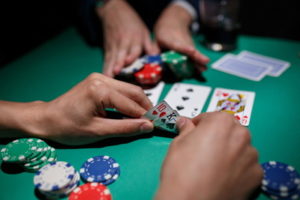 Perhaps the ultimate game for many high stakes gamblers, particularly those who like to test their wits against others. There are numerous, famous high stakes poker tournaments all over the world, played for between six and seven figures, while the most prestigious casinos have private rooms where there is a minimum entry requirement, often in the low to mid five figures.
Perhaps the ultimate game for many high stakes gamblers, particularly those who like to test their wits against others. There are numerous, famous high stakes poker tournaments all over the world, played for between six and seven figures, while the most prestigious casinos have private rooms where there is a minimum entry requirement, often in the low to mid five figures.
Poker is a game which typically does invite high stakes individuals, who are naturally drawn to what they see as a game that allows them to test their wits against others. Because it is as much about being able to read your opponents as it is about the knowledge of the game, this means that when you are playing for high stakes, there can be a lot of egos involved. This is especially true for those who believe that they can bluff their way through certain scenarios and hands.
The ultimate question here – is poker a game of luck or skill? Unlike many casino games, this brings you in direct competition with other players, without any kind of influence from the house, apart from how the cards are dealt. There are no other factors which can determine the overall result, apart from which cards are then drawn and as a result, no players really know what cards their opponents have which is what makes it so intriguing. This also often has a considerable factor in ascertaining what kind of bets are placed. In high stakes games, these can quickly spiral depending on the player.
If someone knows that they have a good hand based on the ‘flop’ then they may use a number of strategies to gradually invite bets. In a low stakes game, someone may know that if they bet too big too quickly, it might scare other players away, though if they can read the person across from them and that they will respond favourably to this, then it can be a good tactic – this is something that is more commonly used in high stakes games though.
One of the advantages of a game of poker for many is that players can essentially have an influence on the outcome of it if they are highly skilled at being able to manipulate the situation to their advantage, have a good head for figures (card counting is particularly hard – also illegal!), however, those who have a combination of both can predict the odds.
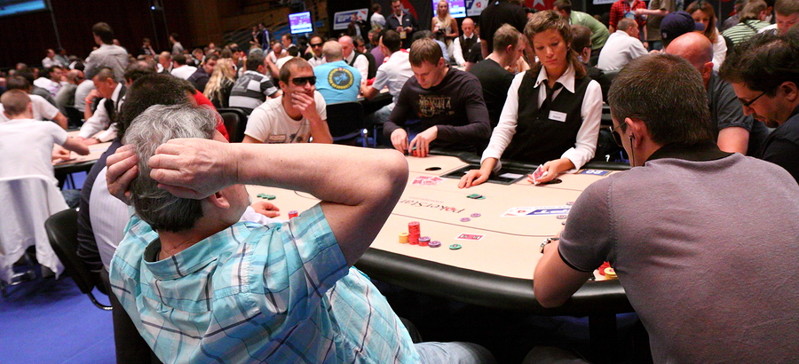
The likeliest scenario where this would likely happen is in a high stakes game, where a player who is that talented would make significant bets if they are able to make, to the best of their ability mathematical predictions and/or are particularly skilled at reading the table to know if and when to make a large bet, regardless of whether they have a good hand or not.
In low stakes, the particularly good players might be particularly confident betting large(r) small stake amounts and doing well – they might even think that they are good enough to be professional, however, it is sometimes the case that they aren’t gamblers, more chancers with deep enough pockets to play small stakes games and confident enough to bluff their way through and bully the table.
However, if you put them into a high stakes game, you would likely see a very different type of player which indicates that when it comes down to it, they do not actually have the nerve. This is usually what sets amateurs (casual players) and professionals apart.
Statistics On Stake Levels In Gambling
 While there might be quite a lot of opinion concerning gambling stakes, with everyone having their own interpretation of what is considered high and low especially with certain games once you take into account the house edge there are other factors to consider too.
While there might be quite a lot of opinion concerning gambling stakes, with everyone having their own interpretation of what is considered high and low especially with certain games once you take into account the house edge there are other factors to consider too.
A certain amount of evidence shows, from a study by the Gambling Commission in 2015, that there is a correlation between the amount wagered in casinos by people from various demographics, while the time of the day can also have an influence as well, particularly for late casino visitors who want to try and maximise their returns as much as they can before the establishment closes. Indeed, the table below demonstrates some interesting data about this.
Regression results for the amount spent (player loss) on B1 machines per visit
| Variable | Co-efficient (£s) | Standard Error | p-value |
|---|---|---|---|
| Time Period | |||
| Transition (Jan 2014) | 2.467 | 1.772 | 0.164 |
| Post-implementation (Feb-Nov 2014) | 6.897 | 2.330 | 0.003 |
| This is a late visit | 1.551 | 0.721 | 0.031 |
| Has late visits | 6.841 | 2.408 | 0.004 |
| Distance from home to the casino | 0.083 | 0.030 | 0.005 |
| Plays table games | -4.693 | 1.506 | 0.002 |
| Plays e-roulette | -6.313 | 1.676 | <0.001 |
| Least deprived | 6.011 | 2.759 | 0.029 |
| Female | 2.358 | 1.414 | 0.095 |
| Interaction Terms: | |||
| Post-implementation *age | -0.055 | 0.036 | 0.123 |
| Post-implementation *most deprived | 2.472 | 1.358 | 0.069 |
| Post-implementation *late visit | 3.789 | 1.103 | <0.001 |
| Intercept | 35.625 | 2.654 | <0.001 |
How This Translates In Simple Terms
While the table above might look complicated with all of these figures, we have broken this down below into easy to understand points about what this data implies:
- The spend per visit indicated that it was higher after the switch in the regulatory regime (the coefficient estimate on the post implementation is particularly significant statistically.
- Evidence from this suggests that the response to changes in legislation was not as noticeable with older players.
- Older people increased their frequency of visits and spend more than younger players statistically.
- As an example, the data indicates that a 25-year-old who did not live in a deprived area would increase their B1 spend per visit £5.53 every visit; the forecast increase though would be increased to £8.00 if the person resided in the most deprived areas.
- The amount that was staked during late visits showed that it was considerably more than non-late visits. This indicates that later visitors increased their average stake size noticeably quickly, highlighting a preference for high stakes with late night players.
The Story Behind Gambling Limits
 A particularly interesting thought is why maximum and minimum betting limits exist, though an obvious answer to that is casinos are in the business of making money, so in accordance to the game in question and the house edge that each one has, simple mathematics dictates exactly how much to set the limits at.
A particularly interesting thought is why maximum and minimum betting limits exist, though an obvious answer to that is casinos are in the business of making money, so in accordance to the game in question and the house edge that each one has, simple mathematics dictates exactly how much to set the limits at.
Because of this, they are aware of the odds for each scenario and often, the limits will differ for each casino game, so that they can maximise their advantage. For high stakes games, they will make the maximum betting limit attractive enough to entice high rollers, though at the same time will know the exact benchmark that they need to put in place (based on each potential outcome), so that they do not stretch themselves too much in case that player wins the possible maximum amount. The same principle applies to low stakes games.
However, there still are smart players who are just as aware of the odds for each game and all of the possible scenarios. This means that they may not necessarily wager the maximum amount allowed, though they will not bet the minimum either. Instead, they are able to define a risk point somewhere in the middle based on potential incremental wins and losses, according to the odds. While the wins may not be that big, it means that they will not lose too much either and because of this, they are able to maintain a steady bankroll.
In 1654, a Frenchman named Blaise Pascal, who was somewhat of a mathematical luminary and as a result, was able to turn this to his advantage through gambling, was posed a question by compatriot Antoine Gombaud ‘Chevalier’ de Mere who was a writer with close ties to the nobility why he usually lost when he wagered even money on ‘double six’ which would according to mathematical averages show up once, in a game of 24 rolls of two dice. Pascal was able to demonstrate that 24 rolls would work against the gambler, however, 25 would tip the scales.
Upon coming up with a potential answer to this, Pascal then sent this to fellow prominent mathematicians at the time, Pierre Fermat and Christian Huygens and consequently a science known as the ‘Probability Theory’ was defined.
Until that time, no exact science was used to calculate gambling odds, instead using rough estimates in addition to trial and error. With Pascal’s breakthrough though, he was able to apply logical mathematics in order to calculate the odds of chance in a scientific manner.
In the centuries since, this has allowed gambling houses, casinos and online casinos to be able to easily work out different components of games in order to give them a better chance of making a profit, such as being able to understand which games they are likely to make a return on and then set gambling limits accordingly.
Future
 As gambling laws become stricter, it could very easily be the case that the gambling commissions pass legislation to protect those most at risk from betting limits, regardless of whether this is for low or high stakes games and this is a debate that continues to rumble on.
As gambling laws become stricter, it could very easily be the case that the gambling commissions pass legislation to protect those most at risk from betting limits, regardless of whether this is for low or high stakes games and this is a debate that continues to rumble on.
Where online casinos are often able to draw in players is via advertising, particularly highlighting the large maximum gambling limits for particular games. If this is higher than the industry average, this is often more than enough to draw in a gambling addict who might be chasing losses and see this as an opportunity to bring their losing streak to an end.
Because of this, gambling commissions may be forced to act accordingly, especially with a considerable rise in the amount of gambling addiction cases in recent years.
